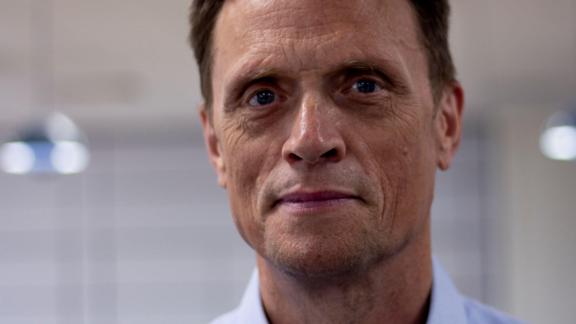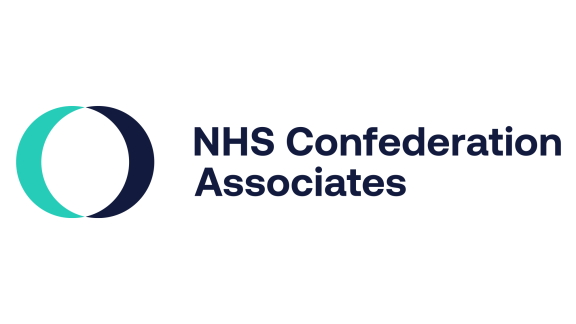Developing the collaborative habit

If integrated care systems are to have open, purposeful and well-facilitated conversations about risk, then deep collaboration may be key, writes Matthew Taylor.
As part of our support for integrated care systems, we are starting to be asked to work with systems and places as they explore how best to deliver for (and with) their local populations.
When I am approached, a question often posed is how partners can work more collaboratively to build better support around the communities they serve. Ultimately, there is an ethical and transformative aspiration: that providers and other system partners will put the needs of the system and its population ahead of organisational interest and in so doing enable a step change in access, quality and productivity.
Deep collaboration
This kind of ‘deep collaboration’ is one of the biggest potential prizes of the ICS project. Sometimes the relationships required for such collaboration form quickly, or circumstances thrust people together and force new ways of working – like COVID-19. Yet generally, creating reciprocity and trust takes time.
So how can we get there? Rather than hoping for transformative collaboration immediately, we need to cultivate the habits of working better together, starting with realistic expectations, shared vision and outcomes, and manageable tasks. Significant progress is possible without leaders having to make sacrifices or take big risks.
Transactional collaboration
A first stage might be termed ‘transactional collaboration.’ This involves the identification and pursuit of opportunities through which all partners benefit from working more effectively together. One example I saw recently involved a virtual care team in south London. They faced a tricky issue: the NHS offer of remote monitoring and at-home support for a patient needs to be complemented by social care provision, but the patient and their family may not meet the criteria for local authority care, particularly when there are major gaps in capacity.
In the south London case, the virtual care team used data to show the local authority that by releasing people earlier from hospital (or avoiding admission) and thus reducing the risk of ‘deconditioning,’ and by providing effective medical care at home, virtual care would substantially reduce the ongoing care needs of patients and carers. The local authority saw that they could reduce medium-term demand by providing short-term care support.
This is not to say that transactional collaboration is easy. It involves having the time, commitment and information to enable partners to understand each other’s ways of working, priorities and constraints. Nevertheless, this form can channel partners’ shared ambition to deliver for their population and the simple motivation of shared progress.
Resource collaboration
A second stage is ‘resource collaboration.’ Here, there may be a transactional element, but one partner is willing to be the major contributor because, at little or no cost to themselves, they can offer something useful to their partners. Data, estate, expertise, networks could all be the basis for resource collaboration.
In Darlington, for instance, separate clinical premises have been set up for the GP federation. These premises are managed and maintained by the federation but shared with the PCN when necessary, such as when practices have been affected by flooding or power cuts. This was also incredibly useful during COVID-19 restrictions as the federation was able to provide ‘hot clinics.’ Sharing of estates in this way ensures that practices are supported and in-person patient care is delivered wherever possible.
…resource collaboration involves effort, which is why it often doesn’t take place even though the benefits can seem obvious
Again, resource collaboration involves effort, which is why it often doesn’t take place even though the benefits can seem obvious. Insight into partners’ resources and needs, clarity about the offer being made and its limits, and the generosity to go ‘above and beyond’ to support another organisation are all necessary.
Pursuing transactional and resource collaboration can generate major benefits in themselves but it also can also strengthen relationships, build trust and create the context in which new, more transformative possibilities start to feel possible.
Ultimately, deep collaboration is the most challenging and difficult form. It requires partners to agree to put the needs of the system and the population it serves above their own personal or organisational interests. This is not just about will. It involves leaders accepting a span of responsibility that is wider than their span of control. This can feel ambiguous and risky, particularly in a system like the NHS where the concept of accountability is too often associated with the allocation of blame.
…there have been several examples of high-performing trusts taking on the patients of neighbours where they have longer and/or more complex waiting lists, despite the implications of doing so on their own performance statistics
Yet it is possible. Indeed, we are increasingly seeing deep collaboration across our membership. During the pandemic and since, there have been several examples of high-performing trusts taking on the patients of neighbours where they have longer and/or more complex waiting lists, despite the implications of doing so on their own performance statistics. Equally, provider collaboratives are beginning to have mature conversations about where to deploy resources, with partners’ organisational pressures put aside and the defining question being ‘what is the best decision for our population?’
In my last blog I talked about the role of systems in balancing risk and minimising harm. The reality is that right now risk of patient harm is endemic in the health system and will be as long as we operate in the large, and still growing, gap between demand and capacity. Often, if I talk to leaders in depth, they reveal a sense that their part of the system is carrying the greatest risks, something which goes against their commitment to care but also endangers their and their organisation’s reputation.
As our members prepare for what will likely be the toughest winter on record, if systems are to have – and crucially act upon – open, purposeful and well-facilitated conversations about risk, then deep collaboration may be key. But, when it comes to collaboration, even the longest journey starts with a single step.
Matthew Taylor is chief executive of the NHS Confederation. You can follow Matthew on Twitter @FRSAMatthew



